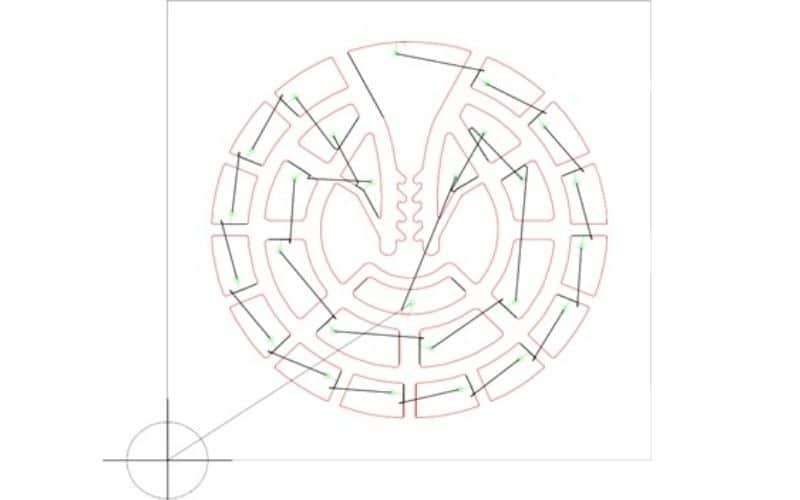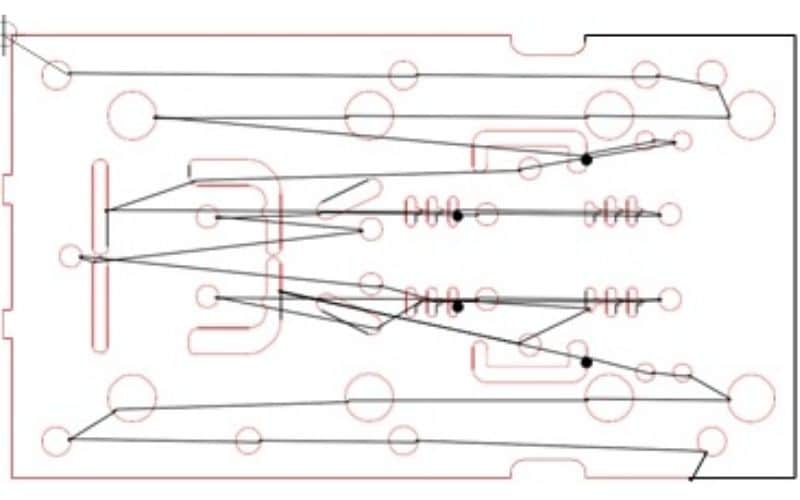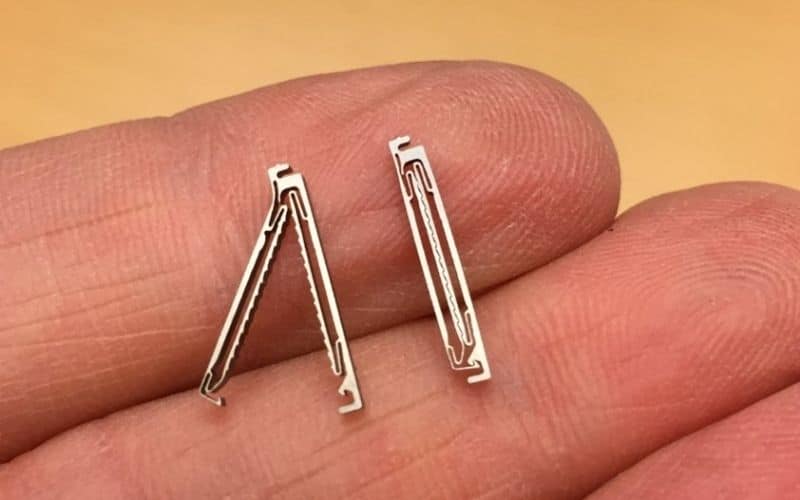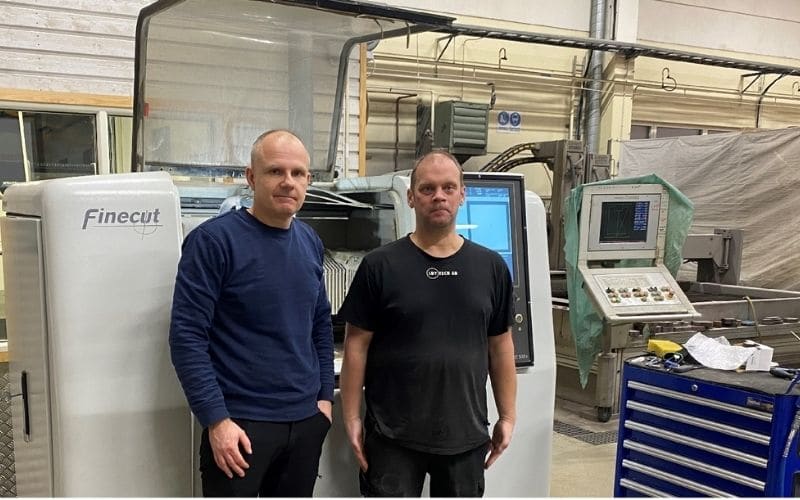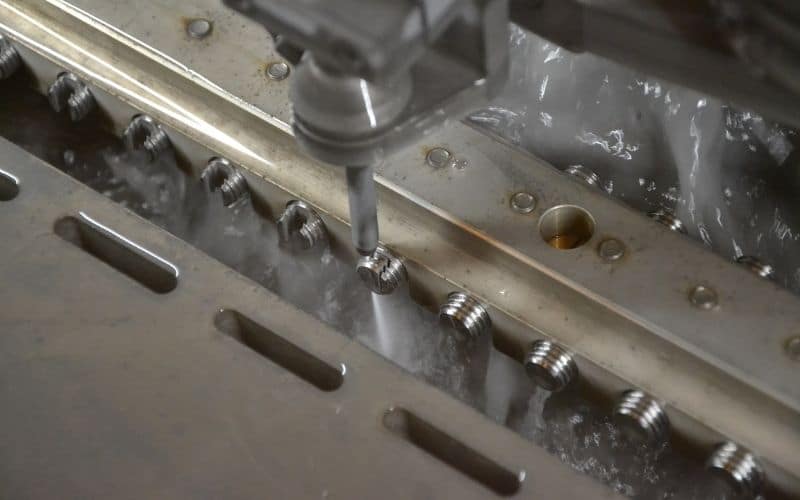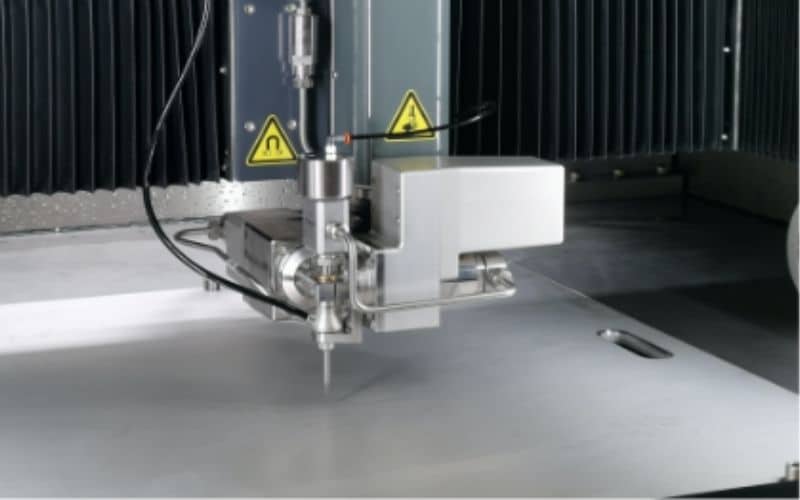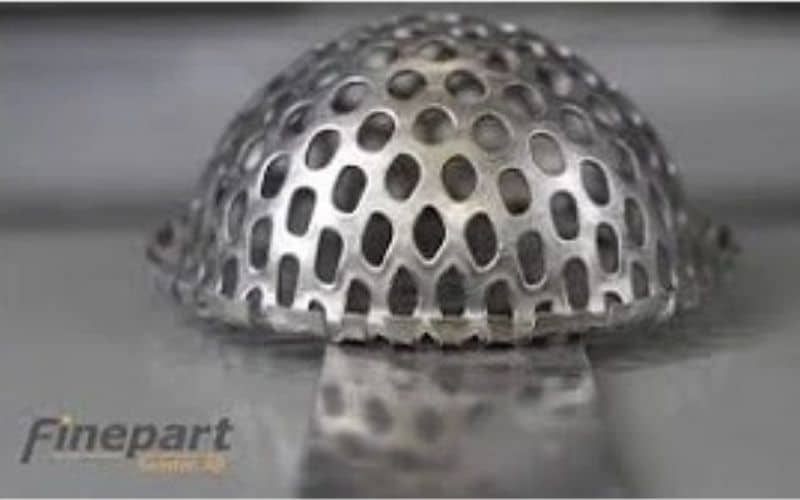CASE
W-EDM vs. Finecut FAW300
The Finecut process is a suitable complement to Wire EDM. The Finecut can provide tolerances down to ±10 microns depending on the part geometry and material. It is versatile and easy to setup. It pierces starting holes and cuts contours in the same setup. Cutting speeds may be up to 5 or 10 times faster, decreasing with material thickness.
Its ability to machine virtually all materials makes it the perfect complement to the W-EDM shop.
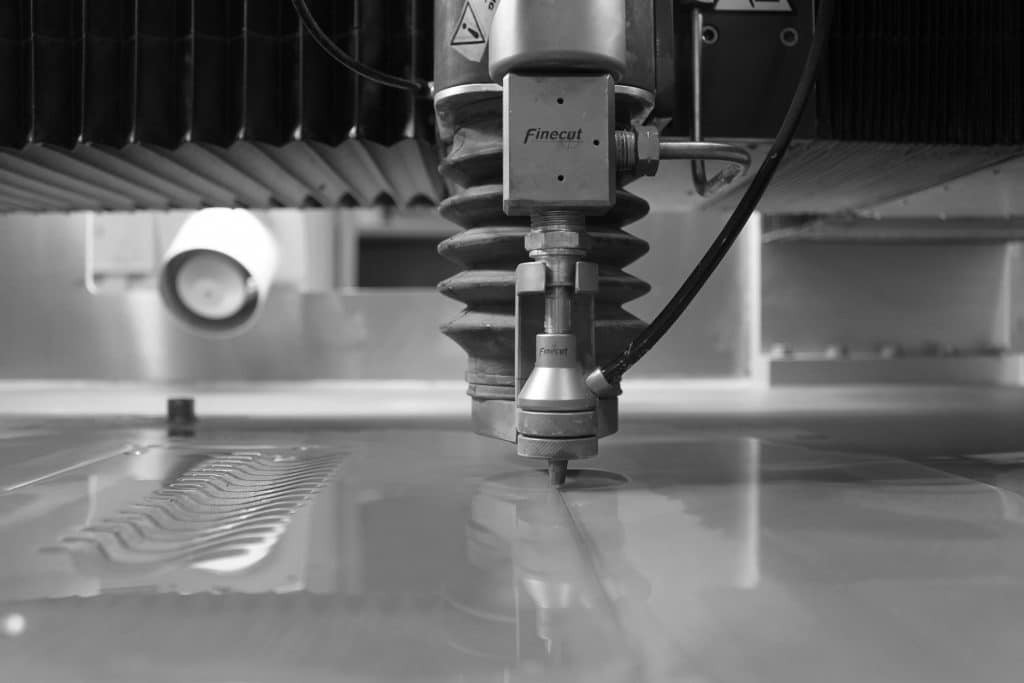
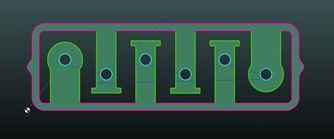
Aluminum part for microwave application
Toolpath
The image shows the tool path created from our CAD cam software (IGEMS).
• Pink = Slow cutting speed
• Green = Fast cutting speed
• Blue = Medium cutting speed
• Dotted Lines = Rapid positions
Wire EDM
Feed Rate
Approximate run time per part
Approx. setup time per plate
Component measured to within
Material thickness
Surface Finish
4mm/min
128 min
Unknown
±0.030mm
6 mm
Ra 3.5μm average
Finecut Micro Abrasive Waterjet Cutting
Feed Rate
Approximate run time per part
Approx. setup time per plate
Component measured to within
Material thickness
Surface Finish
Nozzle Diameter
35mm to 138mm/min depending where cutting.
9 min 33 sec
15-20 mins (Includes fixturing, guide pin holes & clamping arrangement)
±0.030mm
6 mm
Ra 2.3μm average
Ø 0.3mm with Ø 0.12mm Orifice, #230 Mesh Garnet Abrasive
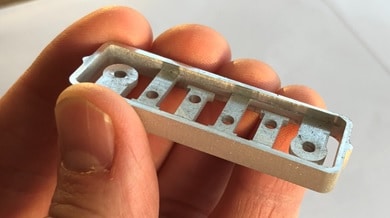
Finished Component
The image shows the finished component cut by micro abrasive water jet cutting. The plate had pockets milled by conventional milling and contours were then cut with micro abrasive waterjet.
Conclusions
Better surface finish
Quicker and much better surface finish compare to the Wire EDM, with no thermal wear or distortion.
No additional operations
No pre-operations – the waterjet can pierce straight through
Higher output
Higher cutting speed that gives higher throughput and consequently lower cost per part
A versatile machine tool to complement the W-EDM machine shop
The ability to cut non-conductive parts makes the Finecut machine a perfect complement to consider for any Wire-EDM shop to expand its machine tool inventory. Besides widening the scope of business opportunities, the moderate running costs and the ability to pierce and cut precise parts in the same setup with higher cutting speeds can offer economic benefits over the W-EDM, especially for thin parts. Aluminum and precious metals are easily cut, and so are also advanced engineered metals like Nitinol, alloys from magnesium or titanium without the hassle of recast layers or heat affected zones.
Must read: Micro Waterjet vs EDM Cutting
Benefits include
• Much quicker than W-EDM at virtually the same hourly cost
• Less handling with piercing and cutting in one set-up
• No wire breakage
• No heat generated during the process – no recast layers
• Cutting of thin segments with retained material properties
• Ability to cut non-conductive materials
• Combined materials / composite material can be cut
• Fine surface finish
• Recycling of precious metal possible

